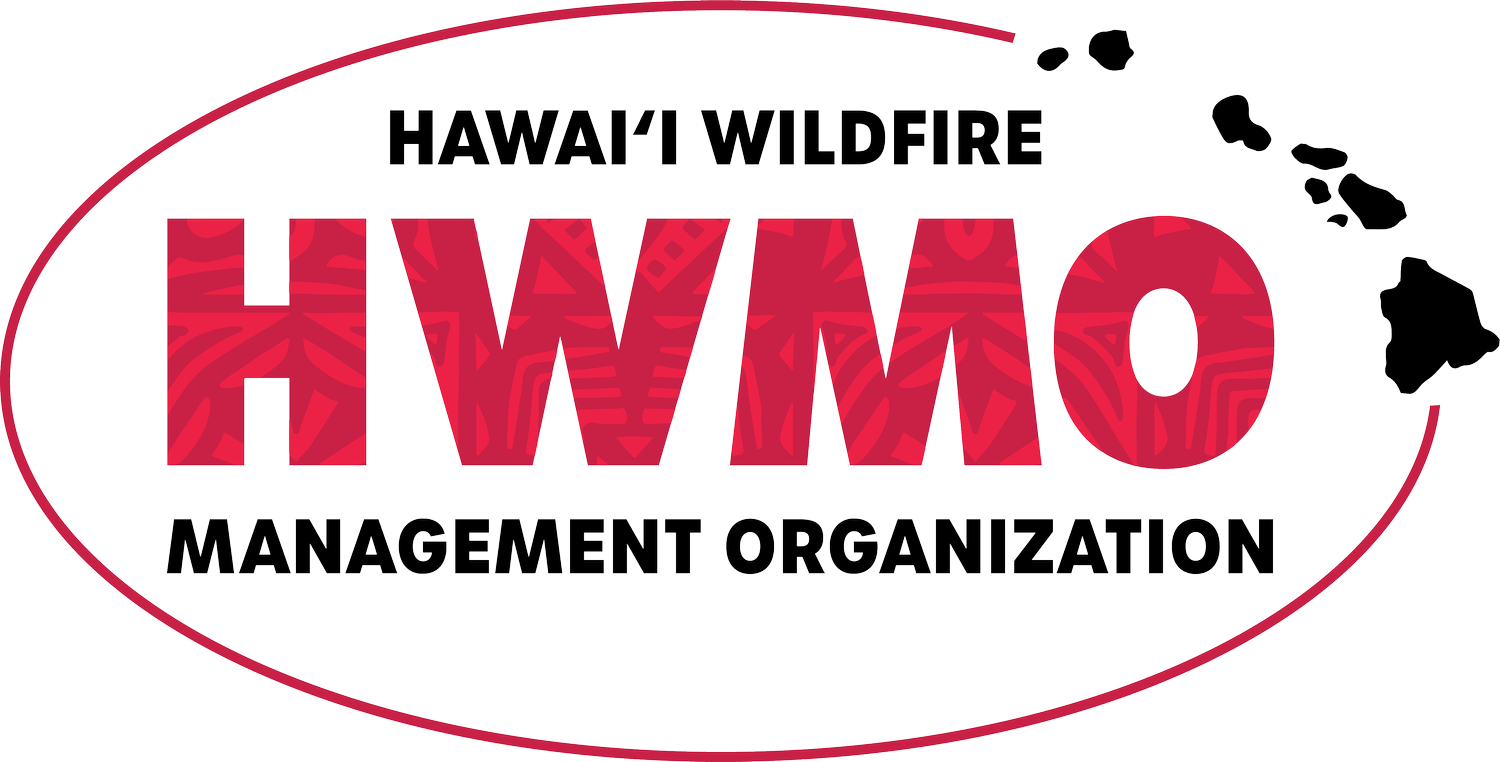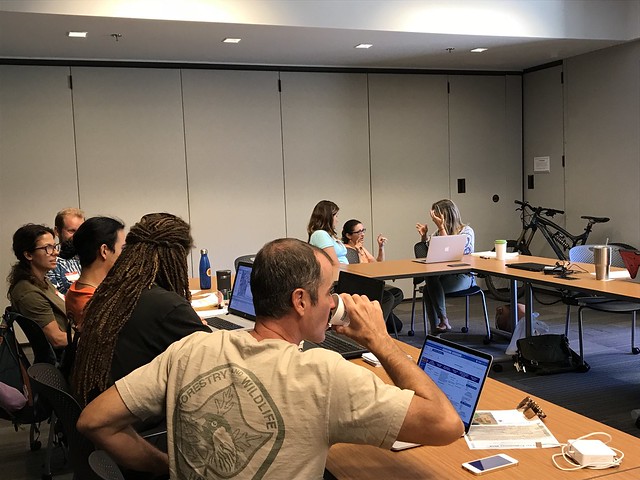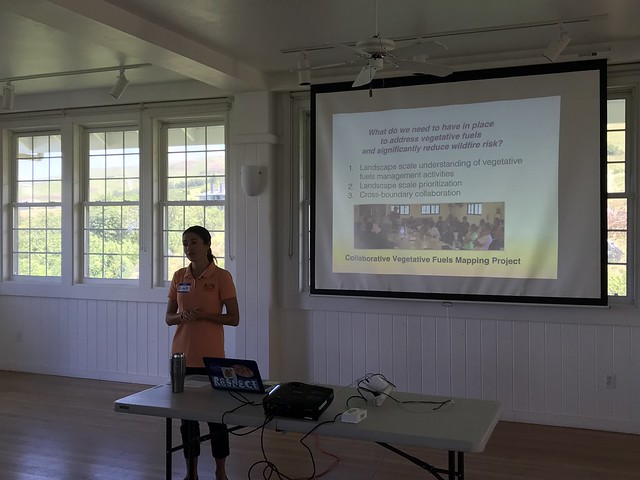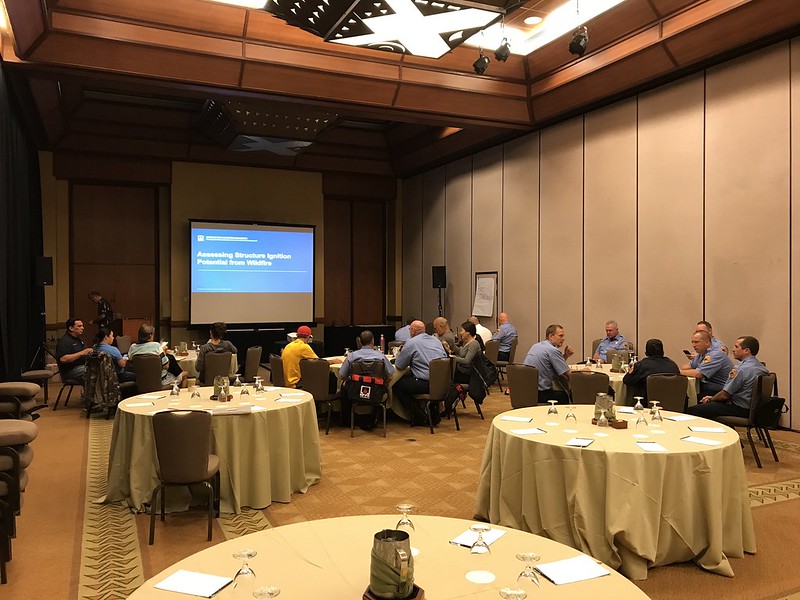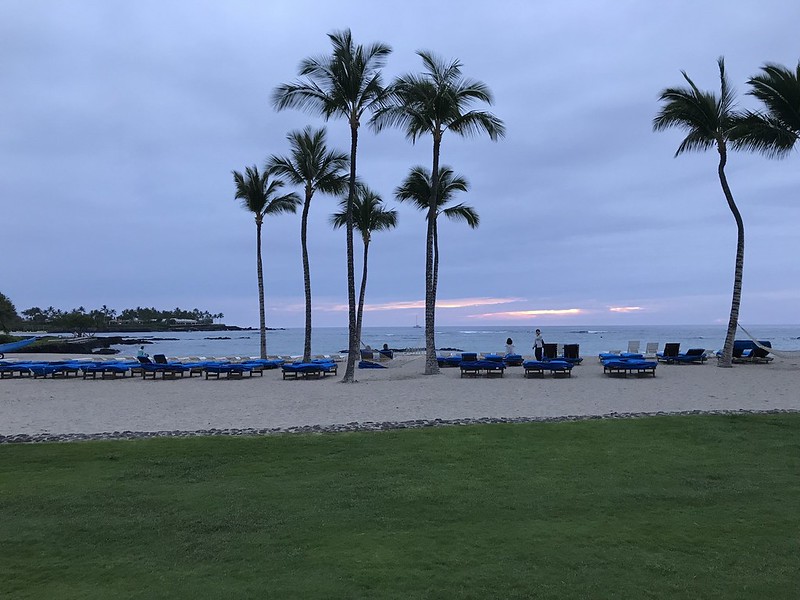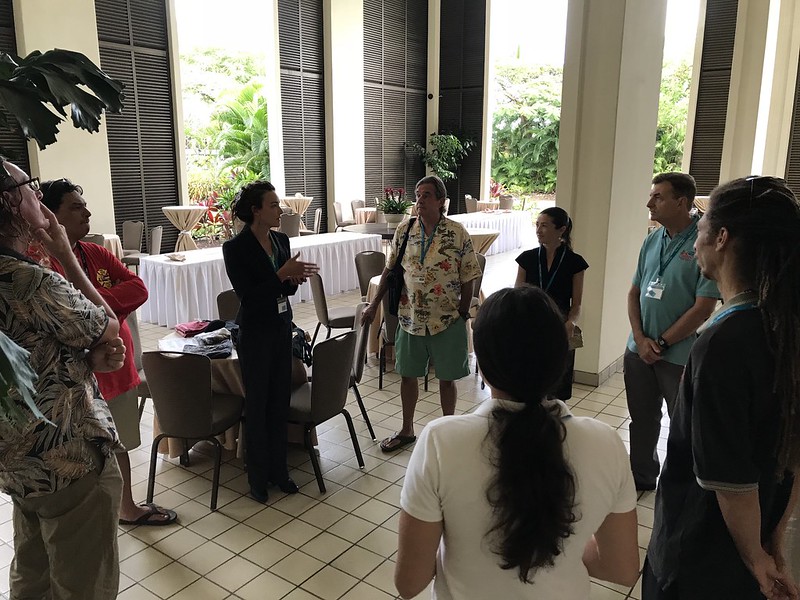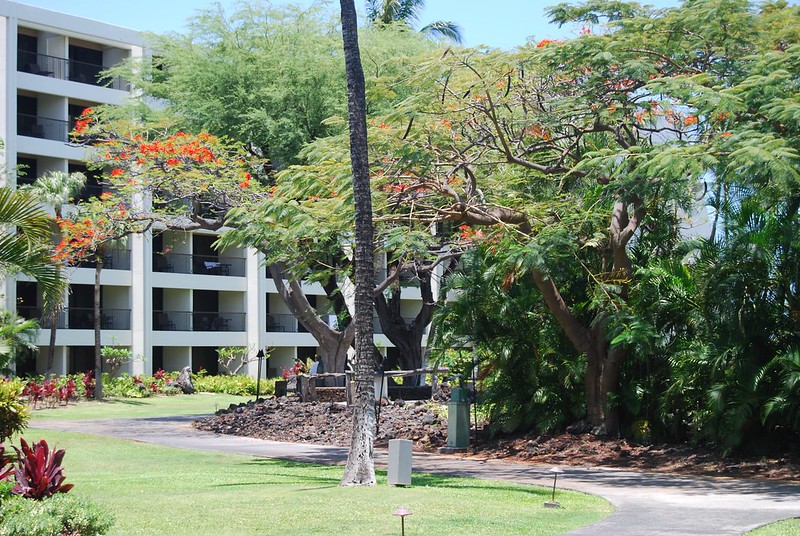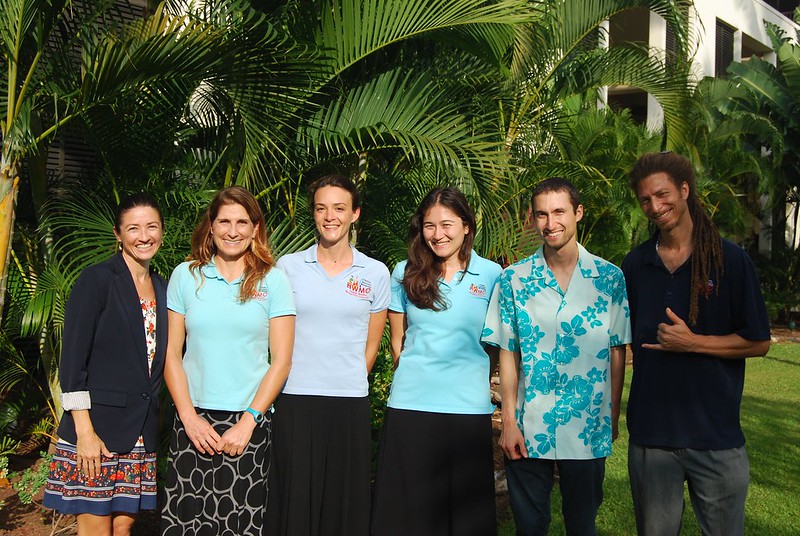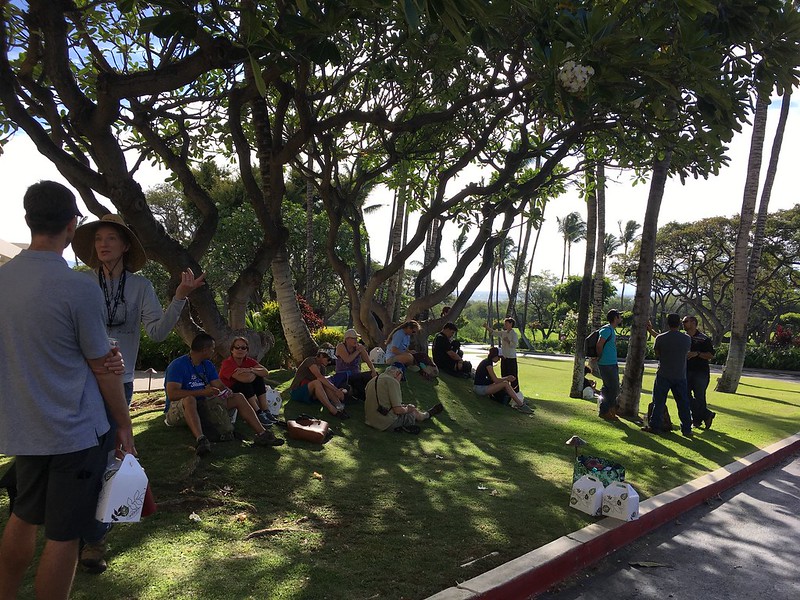Maui Vegetative Fuels Management Mapping Meetings and LHWRP Workshop
Mapping with Lance De Silva of DOFAW.
As a hub of wildfire protection efforts across the Hawaiian Islands, we are always looking for ways to bring people together to solve some of our most complex wicked problems. The Hawaiian Islands have been struggling with invasive species spread for decades, but now we are seeing what happens when invasive flammable plants take over the landscape and allow fires to spread more quickly and over larger areas. By controlling or managing flammable vegetation at the landscape-level, we can make great strides towards reducing the wildfire risk on our islands.
That’s why HWMO is coordinating a statewide vegetative fuels management mapping project — a rapid assessment to understand the vegetation management needs and priorities of landowners and land managers throughout the Hawaiian Islands. DLNR Division of Forestry and Wildlife and University of Hawaii CTAHR Cooperative Extension are key partners in the effort.
The vision for the project is that the resulting maps will lead to 1) better prioritization and communication of vegetative fuels management on the landscape-scale and 2) enhance project coordination between organizations and funding opportunities.
Mapping at the LHWRP office with members of the ranching community on Maui.
On June 16 and 17, we had a series of meetings with DOFAW, Alexander & Baldwin, Hana Ranch, and DHHL to map current and desired vegetation management activities in Maui Nui. Activities could include any vegetation reduction or conversion projects such as roadside mowing, fuelbreaks, grazing rotations, clearing around structures or power poles, brush abatement or thinning, tree trimming, loi restoration, agriculture, and native forest restoration. On June 18, we held a workshop in conjunction with Leeward Haleakala Watershed Partnership to gather more data, especially in regards to restoration efforts and grazing areas.
